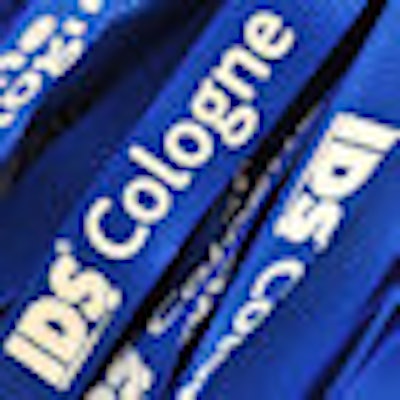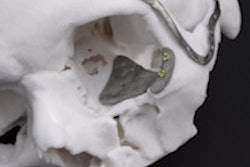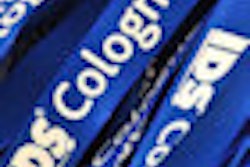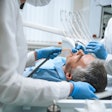
COLOGNE, Germany - Saturday, Day Five: I again saw some interesting products, including one developed by a friend of mine, Dale Miles, DDS.
Dr. Miles is an oral radiologist who has written many books on radiography and cone-beam CT technology, and now he has developed a software product called Easy Writer. After you do a cone-beam CT scan, you are legally responsible for interpreting any potential pathologies in the scan, whether it involves your treatment planning or not. The Easy Writer walks you step by step through the interpretation of your cone-beam CT scans. Through words and pictures, you can efficiently generate a very detailed report for your dental records.
 The Easy Writer walks you step by step through the interpretation of cone-beam CT scans.
The Easy Writer walks you step by step through the interpretation of cone-beam CT scans.Meanwhile, AdDent has released an updated version of its popular shade matching light. The new Rite Light 2 has multiple lighting scenarios, including daylight, incandescent, and mixed lighting. This allows you to more accurately judge shades using multiple lighting conditions.
Another interesting device was the Impla Sonic (KMG), an ultrasound machine that claims to promote osteoblastic activity and alveolar bone growth after implant placement. I have no idea if this works, but it was interesting concept.
 The Impla Sonic is designed to promote osteoblastic activity and alveolar bone growth after implant placement.
The Impla Sonic is designed to promote osteoblastic activity and alveolar bone growth after implant placement.Now for the the most interesting thing I saw at IDS: DigitalPrep from B&D Dental Technologies. This is a concept whereby you take a preoperative impression of a tooth or teeth either with a polyvinylsiloxane (PVS) impression or scanner. The file of the preoperative tooth is then virtually prepared. A model of the virtually prepared tooth is then printed via stereolithography, and a cut-down jig is produced so that you can then accurately prepare the tooth. From the virtually prepared tooth, a crown can be fabricated at the same time. So, in effect, you can now deliver a final crown at the preparation appointment in less than 30 minutes in many cases. Currently, there are some limitations, but you can do a single tooth or up to a four-unit bridge.
IDS 2013 sets new records
The 35th International Dental Show (IDS) posted record-setting results when it closed on March 16, 2013, after five days in Cologne.
The world's leading dental trade fair attracted 125,000 trade visitors from 149 countries, up 6% compared with IDS 2011, according to show organizers.
Records were also set in terms of the number of exhibitors and the occupied exhibition area. This year 2,058 companies (+5.3%) from 56 countries presented a wide range of innovations, products, and services on 150,000 square meters of exhibition area (+3.4%).
With 68% of the exhibitors and 48% of the visitors coming from abroad, the fair was also more international than ever before, show organizers noted.
I am very excited about doing some cases using this technique in the very near future and will report back. This technique could potentially revolutionize dentistry.
The IDS, as usual, did not let me down, as it gave me the ability to see what's in store for dentistry over the next few years. Hopefully, we will see some of these products make their way to the U.S. in the not-too-distant future. Right now, the future appears to be digital dentistry and everything that goes with it, from chairside and laboratory scanners to milling machines and 3D printers.
As the saying goes, the future's so bright I've got to wear shades.
Marty Jablow, DMD, lectures and consults extensively about integrating technologies into the modern dental practice (www.dentaltechnologycoach.com).
The comments and observations expressed herein do not necessarily reflect the opinions of DrBicuspid.com, nor should they be construed as an endorsement or admonishment of any particular idea, vendor, product, or organization.

















